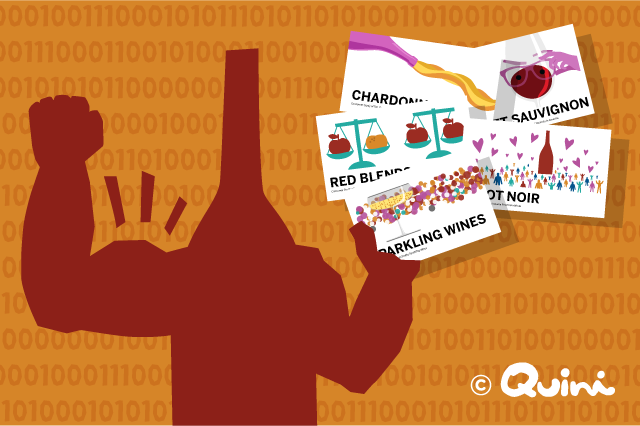
How Wine Producers Are Using Consumer Sensory Data To Improve Business
No matter the size of your winery, it can now be the engine that could. At your fingertips, is access to information most wineries have never had.
Traditional consumer research, including focus groups, sensory analysis and consumer surveys, take too long to conduct and are very expensive. Most wineries are left making key decisions based only on experience and educated guesses. The cost of which can be huge.
New methods and technologies for consumer sensory research offer year round access to regularly updating data, three times faster and for one third of the cost of traditional methods.
Wineries that best utilize consumer sensory data are asking (and answering) the right business questions.
Below are a few real Quini winery client cases where sensory data was tapped to solve a mix of important business and product issues. For more details about the individual cases, feel free to email info@quiniwine.com.
1) Chardonnay: Two SKUs on a winery’s million case per year brand. The winery was investigating possible product cannibalization.
Are these wines in direct competition? Do consumers perceive clear differences between the products? Should we change the liquid or just the branding? This was a critical, high risk decision.
2) Sauvignon Blanc: Core SKU and flagship wine varietal. Meeting sales projections. This is a winery that was looking for feedback that could provide consumer insight that may uncover additional sales channels and markets.
3) Pinot Noir: Top selling wine. The winery was looking to acquire data to better understand its target audience, better position its products and optimize marketing dollars.
What about this wine is driving consumer success?
What consumer groups are the strongest promoters of this wine? Are there any potential detractor groups?
4) Red Blend: Declining sales for the last 3 years. The winery’s teams had tried everything to reverse the decline.
Can consumers provide new insight to uncover reasons for the drop-off?
5) Red Blend: Unique blend of Italian varietals whose heritage and success is key to telling the story of this well known California family winery. The product is sold as a very food friendly wine because each varietal can be noted by the taster depending on the food the wine is paired with it.
Does the customer perceive this?
Does the consumer understand that the wine name represents four varietals?
Does the name of the wine impact consumer perception?
6) Sauvignon Blanc: Estate grown, produced and bottled. Sold under a secondary brand and marketed as “weekday wines”. The style is more bright tropical fruit with a bright citrus finish compared to the producer’s estate label Sauvignon Blanc, which is a little richer tropical style, with notes of kiwi and mango.
What does the customer look for in a value Sauvignon Blanc?
Should the two styles be more similar?
7) Cabernet Sauvignon: Highest production volume product for the winery. High margin. Scored 90+ points 5 years in a row by Wine Enthusiast. When released, it is a ready to drink cab, but the winery feels it is also very ageable. Not in the style of a traditional Napa Cabernet, but it does have concentrated fruit, rounder tannins and a long finish.
Consumer insight and data were needed for a sales presentation with a major retailer, providing floor sales staff with selling takeaways and facts.
Can this wine continue to compete with the big Cabernets?
Will a consumer pay even a few dollars more for this style of Cabernet?
8) Pinot Gris: Flagship wine. Next year the product will receive a branding update. The winery was looking for consumer insight on the product in the bottle and the branding, to establish a baseline to compare the updated product against.
9) Viognier: Sales had been slower than anticipated. Since launch, the wine received multiple industry reviews of 90+ points, and trade awards.
Does this wine style equally appeal to consumers? In the producer’s key markets, are consumers aware of this varietal?
10) Chardonnay: Internal disagreement on whether a style change between the last two vintages was the right decision.
Can consumers tell the difference? Which do they prefer?
Should the winery proceed with the new version or revert back to the prior, proven style?
In each of these cases, major decisions had or still have to be made. Quini’s consumer panels around North America and Australia provided the answers swiftly and affordably. Including for a Rose wine business case where a large winery needed to find out the impact of colour on consumer preference. Hint, it does.
What is your business or product challenge? If it is not listed in the examples, drop us an email to sales@quiniwine.com. We would be happy to discuss your scenario and share additional case studies with you.




Comments